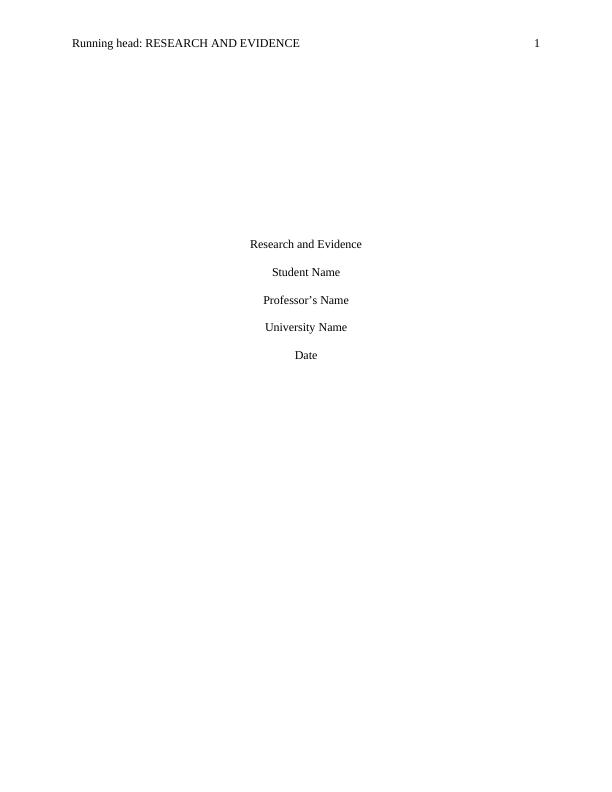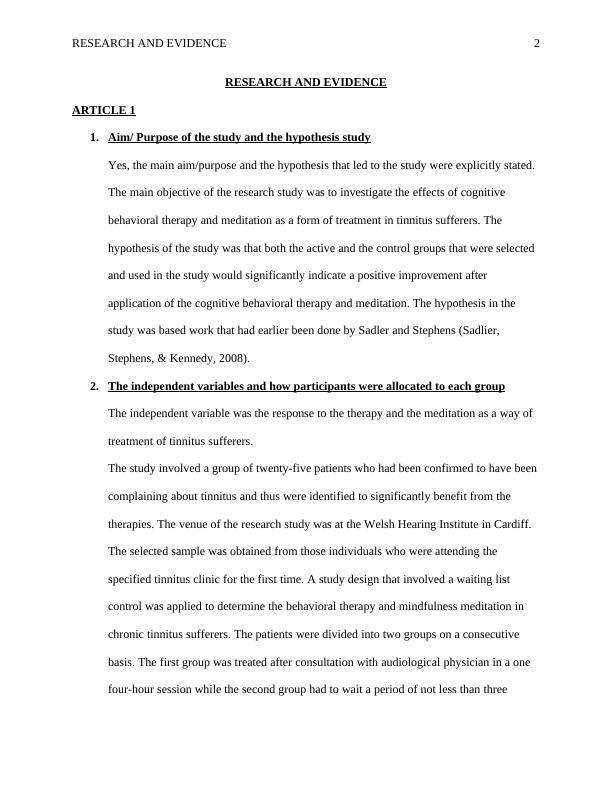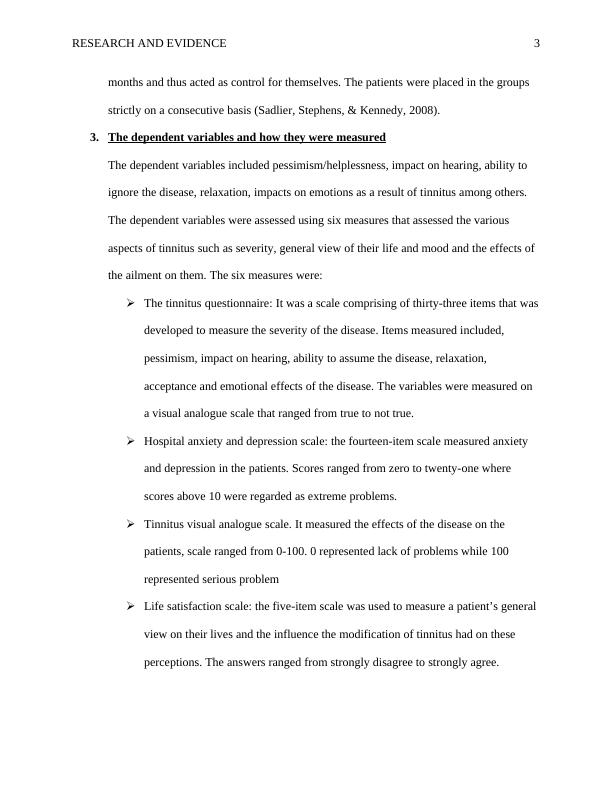Research and Evidence
10 Pages1925 Words497 Views
Added on 2022-12-01
About This Document
This article explores the effects of cognitive behavioral therapy and meditation as a form of treatment in tinnitus sufferers. It discusses the aim of the study, the independent and dependent variables, the main findings, and potential threats to validity and reliability. The article also provides solutions to mitigate these threats.
Research and Evidence
Added on 2022-12-01
ShareRelated Documents
End of preview
Want to access all the pages? Upload your documents or become a member.
Research and Evidence in Science: Effect of CBT in Tinnitus
|8
|1942
|175
Is the use of yoga and meditation therapy effective in improving one's long term well being?
|7
|1840
|189



